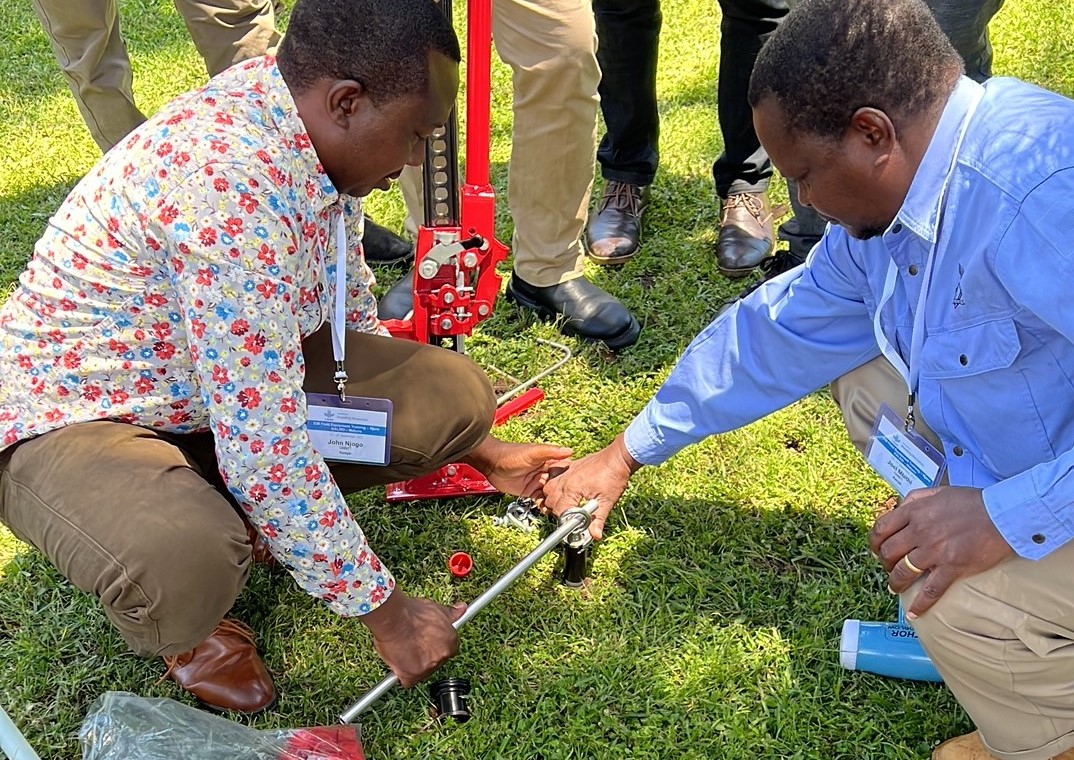
If public crop breeding is to reach its lofty goals, breeders and breeding stations need to have the right equipment. Upgrading equipment means time saved, better accuracy in data collection, and less errors and inefficiencies in the field. But equipment is only as good as the ability to operate and maintain it – crucial for full adoption. All of this is vital to modernize breeding operations so that we can produce new varieties that meet climate, environmental and nutritional challenges.
CGIAR and its national partners have been upgrading their equipment and processes. And recently, CGIAR Excellence in Breeding and the Breeding Resources Initiative helped programs obtain new equipment from USAID. And the teams have been following up with in-depth training with equipment operators.
The Crops to End Hunger-sponsored trainings have focused on newly supplied equipment such as seed counters, seed moisture testers, soil preparation tools, and weighing systems. Three trainings have now been held in Nigeria, Kenya and Zimbabwe. The three-day courses trained over 85 staff from across Africa on how to operate the equipment, as well as aspects of maintenance and management.
Working with trainers and participants from across the CGIAR, the efforts generated five key takeaways:
The right equipment and training can save precious time: Operations can be time-consuming, which costs money, uses staff resources, and can sometimes mean less accurate data. Newer equipment can make major gains here. For instance, USAID supplied seed counters and Harvest Master mechanized weighing systems. These will drastically reduce the operations related to these tasks. And soil test kits will reduce time spent following wet chemistry procedures in the lab.
Equipment needs to be appropriate for women too: Both breeding and agriculture are often male-dominated, but as women take on more active roles, equipment needs to meet their needs. Women may have physical constraints that should be understood and addressed better purchases and design. There also needs to be appropriate training to ensure women can use the equipment. For example, A hand pushed mechanical seeder can be too heavy for many women. Lighter machines or more motorized equipment would help. There can also be smaller and lighter ploughs and tractors that can be comfortably operated by women.

EiB and CGIAR Breeding Resources Initiative trains teams from Kenya's KALRO, Uganda's NARO and CIMMYT on USAID/CtEH supplied seed counters, seed moisture testers and more. Credit: Vinicius Pereira da Rocha, EiB/Breeding Resources
Ensure ongoing and innovative training: Staff need to continually upgrade their skills – not just on operating equipment, but on maintaining it. Particularly for national programs, exchange visits to countries where the improvements have really advanced could be beneficial. As well, breeding programs should encourage more engagement of women. Results would flow from having more professional women who have handled the equipment and can then train others.
Better equipment and training mean better data: Mechanization brings more homogeneity in operations, providing better results and data for scientists. This helps ensure the easy identification of operational failures by producing automatic reports, as in the cases of seed counters and the Harvest Master. Training is a fundamental part of ensuring equipment is correctly calibrated and properly operated, as well as ensuring the quick resolution of maintenance problems. This all means more accurate data, leading to better breeding decisions. And better decisions mean the right varieties developed more quickly for smallholder farmers.
Equipment contributes to environmental and climate change solutions: Research stations will be more prepared to support CGIAR-NARES breeding networks in delivering climate resilient crops. Stations have been trained and equipped to allow them to be more environmentally responsible in their operations, for example by properly managing soils with the right tools. This decreases soil degradation.
CGIAR will continue to support its programs and those of national partners to fully modernize and digitize their operations. And by considering these points, programs can better ensure new crop varieties reach the people who need them.
-----
Story by Adam Hunt, Communications Lead, CGIAR Excellence in Breeding (EiB), with input from training facilitator EiB/Breeding Resource's Vinicius Pereira da Rocha. Contents reflect the information and views of the authors/quoted individuals only. We would like to thank all funders who support this research through their contributions to the CGIAR Trust Fund, with particular thanks to Australian Centre for International Agricultural Research (ACIAR), Bill & Melinda Gates Foundation, Deutsche Gesellschaft für Internationale Zusammenarbeit (GIZ), United States Agency for International Development (USAID), and the Crops to End Hunger (CtEH) initiative.